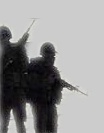 |
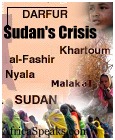
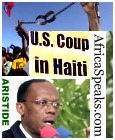
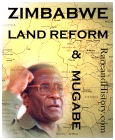
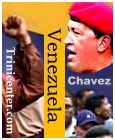


 AfricaSpeaks Weblog AfricaSpeaks Weblog
 Rootswomen Weblog Rootswomen Weblog
 Rootsie's Weblog Rootsie's Weblog
|
A History Of Bio-Chemical Weapons
Posted: Sunday, November 24, 2002
By Zoltan Grossman, Jan 24, 2002
History of bio-chemical warfare from 800 BC to 2001 AD
400s BC.: Spartan Greeks use sulfur fumes against enemy soldiers.
1346: Crimean Tatars catapult plague-infected corpses into Italian trade settlement.
1500s: Spanish conquistadors use biological warfare used against Native peoples.
1763: British Gen. Jeffrey Amherst orders use of smallpox blankets against Native peoples during Pontiac's Rebellion.
1800s: Smallpox and other diseases ravage Native American communities; U.S. officials use quarantine techniques to isolate diseases in white communities, but not in Native villages.
1907: Hague Convention outlaws chemical weapons; U.S. does not participate.
1914: World War I begins; poison gas produces 100,000 deaths, 900,000 injuries.
1920s: Britain proposes use of chemical weapons in Iraq "as an experiment" against Kurdish rebels seeking independence; Winston Churchill "strongly" backs "the use of poisoned gas against uncivilised tribes."
1928: Geneva Protocol prohibits gas and bacteriological warfare; most countries that ratify it prohibit only the first use of such weapons.
1935: Italy begins conquest of Abyssinia (Ethiopia), using mustard gas.
1936: Japan invades China, uses chemical weapons in war.
1939: World War II begins; neither side uses bio-chemical arms, due to fears of retaliation in kind.
1941: U.S. enters World War II; President Roosevelt pledges U.S. will not be first to use bio-chemical weapons.
1943: U.S. ship damaged by German bombing raid on Bari, Italy, leaks mustard gas, killing 1000.
1945: Germans use Zyklon-B in extermination of civilians.
Japanese military discovered to have conducted biological warfare experiments on POWs, killing 3000. U.S. shields officers in charge from war crimes trials, in return for data. Soviets take over German nerve gas facility in Potsdam. The Nazis had stockpiles of nerve gas against which the Allies had no defenses, and had also been working on blood agents.
1947: U.S. possesses germ warfare weapons; President Truman withdraws Geneva Protocol from Senate consideration.
1949: U.S. dismisses Soviet trials of Japanese for germ warfare as "propaganda." Army begins secret tests of biological agents in U.S. cities.
1950: Korean War begins; North Korea and China accuse U.S. of germ warfare--charges still not proven. San Francisco disease outbreak matching Army bacteria used on city.
1951: African-Americans exposed to potentially fatal simulant in Virginia test of race-specific fungal weapons.
1952: German chemical weapons researcher Walter Schreiber, working in Texas, exposed as a perpetrator of concentration camp experiments, and flees to Argentina.
1956: Army manual explicitly states that bio-chemical warfare is not banned. Rep. Gerald Ford wins policy change to give U.S. military "first strike" authority on chemical arms.
1959: House resolution against first use of bio-chemical weapons is defeated.
1961: Kennedy Administration begins hike of chemical weapons spending from $75 million to more than $330 million.
1962: Chemical weapons loaded on U.S. planes during Cuban missile crisis.
1966: Army germ warfare experiment in New York subway system.
1968: Pentagon asks for the chance to use some of its arsenal against protesters to demonstrate the "efficacy" of the chemicals. Maj. Gen. J.B. Medaris says, "By using gas in civil situations, we accomplish two purposes: controlling crowds and also educating people on gas. Now, everybody is being called savage if he just talks about it. But nerve gas is the only way I know of to sort out the guys in white hats from the ones in black hats without killing any of them."
1969: Utah chemical weapons accident kills thousands of sheep; President Nixon declares U.S. moratorium on chemical weapons production and biological weapons possession. U.N. General Assembly bans use of herbicides (plant killers) and tear gasses in warfare; U.S. one of three opposing votes. U.S. has caused tear gas fatalities in Vietnamese guerrilla tunnels.
1971: U.S. ends direct use of herbicides such as Agent Orange; had spread over Indochinese forests, and destroyed at least six percent of South Vietnamese cropland, enough to feed 600,000 people for a year. U.S. intelligence sources gives swine-flu virus to anti-Castro Cuban paramilitary group, which lands it on Cuba's southern coast (according to 1977 newspaper reports).
1972: Biological and Toxic Weapons Convention. Cuba accuses CIA of instilling swine fever virus that leads to death of 500,000 hogs.
1974: U.S. finally ratifies 1928 Geneva Protocol.
1975: Indonesia annexes East Timor; planes spread herbicides on croplands.
1979: Anthrax leak from Soviet biological weapons lab kills 60 near Sverdlovsk. Washington Post reports on U.S. program against Cuban agriculture since 1962, including CIA biological warfare component. Anthrax outbreak among Africans in white-ruled Rhodesia (in the last stages of the Zimbabwe independence war) results in 10,000 cases,
182 of them fatal (according to Covert Action Quarterly #43)
1980: U.S. intelligence officials allege Soviet chemical use in
Afghanistan, while admitting "no confirmation." Congress approves nerve gas facility in Pine Bluff, Arkansas. Iraq begins eight-year war with U.S. arch-enemy Iran.
1981: U.S. accuses Vietnam and allies of using mycotoxins (fungal poisons) in Laos and Cambodia. Some refugees report casualties; one analysis reveals "yellow rain" as bee feces. Israel bombs Iraqi nuclear reactor, leading to Iraqi decision to build chemical weapons.
1984: U.N. confirms Iraq using mustard and nerve gasses against Iranian "human wave" attacks in border war; State Department issues mild condemnation, yet restores diplomatic relations with Iraq,
and opposes U.N. action against Iraq. Bhopal fertilizer plant accident in India kills 2000; shows risks of chemical plants being damaged in warfare. President Reagan orders over a half-million M55 rockets retooled so they contain high-yield explosives as well as VX gas. (The Army later claimed that many of these rockets were "unstable" and leaking nerve gas.)
1985: U.S. resumes open-air testing of biological agents. U.S. firms begin supplying Iraq with numerous biological agents for a four-year period (according to a 1994 Senate report).
1986: U.S. resumes open-air testing of biological agents.
1987: Senate ties in three votes on resuming production of chemical weapons; Vice President Bush breaks all three ties in favor of resumption.
1988: Iraq uses chemical weapons against Kurdish minority in Halabjah; U.S. continues to maintain agricultural credits with Iraq; President Reagan blocks congressional sanctions against Iraq.
1989: Paris conference of 149 nations condemns chemical weapons, urges quick ban to emerge from Geneva treaty negotiations; U.S. revealed to plan poison gas production even after treaty signed.
1990: U.S., Soviets pledge to reduce chemical weapons stockpiles to 20 percent of current U.S. supply by 2002, and to eliminate poison gas weapons when all nations have signed future Geneva treaty. Israel admits possession of chemical weapons; Iraq threatens to use chemical weapons on Israel if it is attacked.
1991: U.S. and Coalition forces bomb at least 28 alleged bio- chemical production or storage sites in Iraq during Gulf War, including fertilizer and other civilian plants. CNN reports "green flames" from one chemical plant, and the deaths of 50 Iraqi troops from anthrax after air strike on another site. New York Times quotes Soviet chemical weapons commander that air strikes on Iraqi chemical weapons would have "little effect beyond neighboring villages," but that strikes on biological weapons could spread disease "to adjoining countries." Czechoslovak chemical warfare unit detects Sarin nerve gas during air war. Egyptian doctor reports outbreak of "strange disease" inside Iraq. U.S. troops use explosives to destroy Iraqi chemical weapons storage bunkers after the war.
1992: Reports intensify of U.S. and Coalition veterans of Gulf War developing health problems, involving a variety of symptoms, collectively called Gulf War Syndrome. U.N. sanctions intensify civilian health crisis inside Iraq, making identification of similar symptoms potentially difficult. Two members of anti-government Minnesota Patriots' Council arrested for plan to use ricin chemical against law enforcement officer.
1993: President Clinton continues intermittent bombing and missile raids against Iraqi facilities; U.N. inspectors step up program to dismantle Iraqi weapons. U.S. signs U.N. Chemical Weapons Convention, but approval later blocked in Senate.
1995: Japanese cult launches deadly Sarin nerve gas attack on Tokyo subway system.
1996: Congressional hearings on Gulf War Syndrome focuses on Iraqi storage bunker destruction, rather than other possible causes, and does not call for international investigation of symptoms among Iraqis.
1997: Cuba accuses U.S. of spraying crops with biological agents. Iraq expels U.S. citizens in U.N. inspection teams, which are allowed to continue work without Americans, but choose to evacuate all inspectors. U.S. mobilizes for military action. Senate act implements Chemical Weapons Convention, with a provision that "the President may deny a request to inspect any facility" on national security grounds.
1998: U.S. again bombs alleged Iraqi bio-chemical weapons sites, after Iraq questions role of American U.N. inspector, and restricts inspector access to presidential properties and security. U.S. launches missile attack on pharmaceutical plant in Sudan that it alleges produces nerve gas agents--a claim disputed by most of the international community.
1998-99: Series of anthrax hoaxes against U.S. targets, such as NBC, Washington Post, State Department, White House complex, post offices. Former Aryan Nations member Larry Wayne Harris carries out anthrax hoax to dramatize warning of alleged "Iraqi threat." Three members of Republic of Texas militia group arrested for intention to use anthrax and other biological agents against public officials. Upsurge in anthrax hoaxes against abortion clinics.
2000: "Topoff Exercise" involving federal and state authorities fails to cope with simulated chemical, biological and nuclear attacks in three widely separated metropolitan areas.
2001: U.S. withdraws from July's first round of Biological and Toxic Weapons Convention (BTWC), crippling international efforts to establish global measures against bioogical weapons. In wake of September 11 attacks, anthrax spores sent by mail to multiple political and media targets around the U.S., resulting in anthrax exposures, infections, and deaths. Law enforcement authorities debate whether source of anthrax threat is foreign or domestic. Real anthrax attacks accompanied by enormous increase in anthrax hoaxes by "Army of God" and other groups and individuals.
+++++++++++++++++++++++++++++++++++++++++++
Compiled from articles in "Z" magazine by Stephen Shalom and Noam Chomsky (February 1991) and Zoltan Grossman (March 1991), from the Council for a Livable World, William Blum's "Killing Hope: U.S. Military and CIA Interventions Since World War II," ADL Militia Watchdog by Mark Pitcavage (Feb. 1999) and from recent news reports.
Zoltan Grossman is a cartographer/geographer and writer on ethnic relations and geopolitics, based in Madison, Wisconsin.
 Printer friendly version Printer friendly version
 Send page by E-Mail Send page by E-Mail
|








